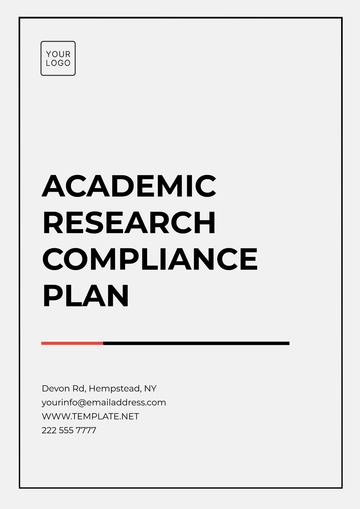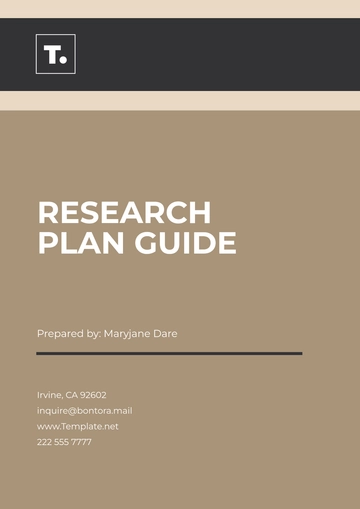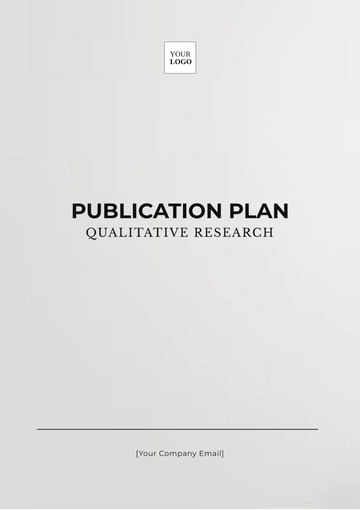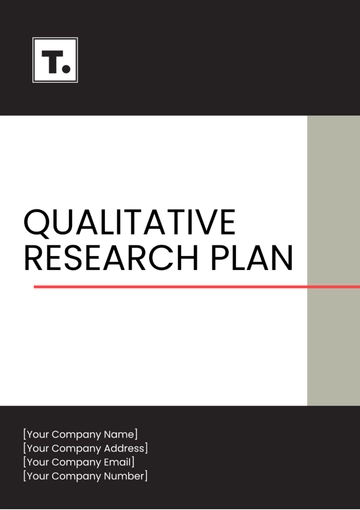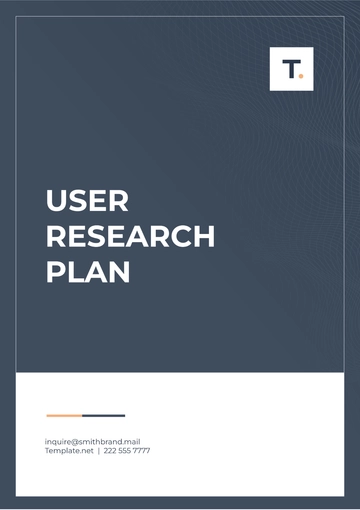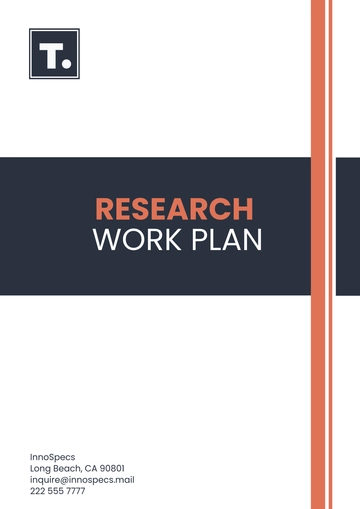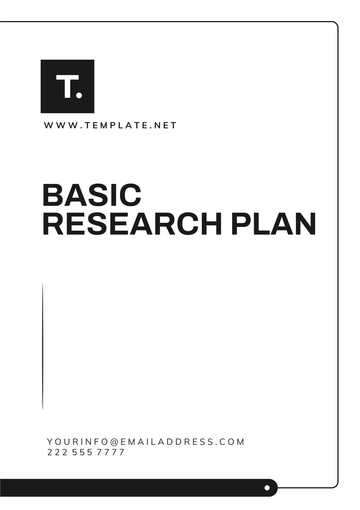Free Publication Plan Qualitative Research
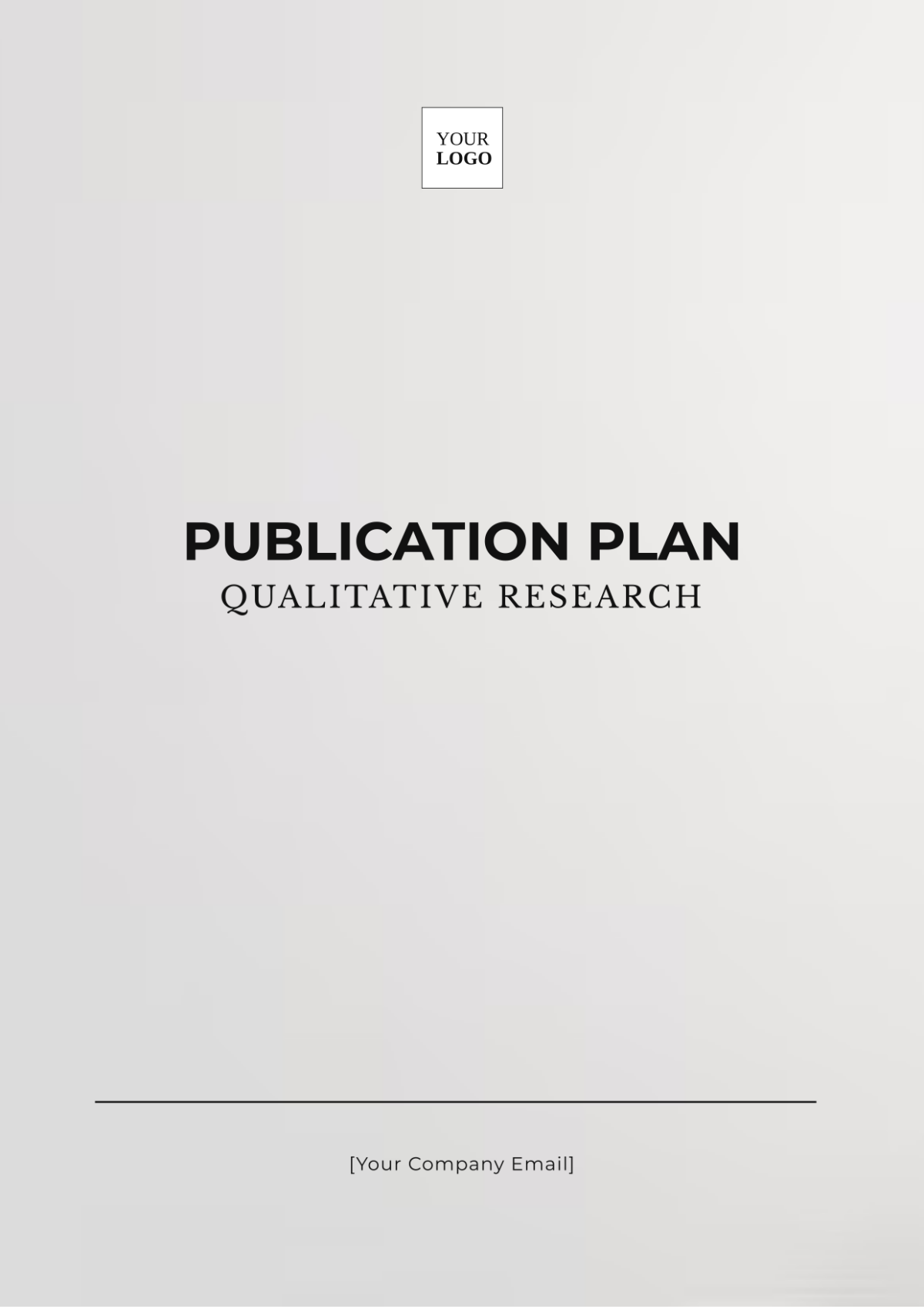
I. Introduction
This strategic document outlines the approach and methodology for publishing qualitative research findings. The plan includes research objectives, design, data collection and analysis methods, and the dissemination strategy. This comprehensive guide ensures the research is conducted systematically and the results are effectively communicated to the intended audience.
II. Research Objectives
The primary objectives of the research are to:
Investigate the underlying factors contributing to a specific phenomenon.
Explore the experiences and perspectives of individuals related to the research topic.
Develop theories or conceptual frameworks based on empirical data.
III. Research Design
To achieve these objectives, the research will adopt a qualitative design characterized by in-depth analysis and rich, detailed data. The key design elements include:
Research Paradigm: Interpretivist approach.
Study Type: Phenomenological study.
Sampling Method: Purposive sampling to select participants who can provide meaningful insights.
Sample Size: Between 10 to 20 participants, depending on saturation.
IV. Methods of Data Collection
The data collection methods will be designed to capture comprehensive and nuanced information. These methods include:
In-depth Interviews: Conduct semi-structured interviews to gather detailed personal accounts.
Focus Groups: Organize focus group discussions to get diverse perspectives and interactive data.
Document Analysis: Review and analyze relevant documents to complement primary data.
Field Notes: Maintain detailed field notes to capture observations and contextual information.
V. Methods of Data Analysis
Data analysis will involve systematic coding and thematic analysis to identify and interpret patterns. The steps include:
Transcription: Transcribe interviews and focus group discussions verbatim.
Initial Coding: Code the data line-by-line to identify significant statements and concepts.
Axial Coding: Group initial codes into broader themes and categories.
Thematic Analysis: Develop overarching themes that capture the essence of the data.
Validation: Use member checking and peer debriefing to ensure the credibility and accuracy of the findings.
VI. Dissemination Strategy
Effective dissemination of research findings is crucial. The strategy includes:
Academic Publications: Submit papers to peer-reviewed journals relevant to the research topic.
Conferences: Present findings at national and international conferences to share with the academic community and receive feedback.
Workshops and Seminars: Conduct workshops and seminars for practitioners and stakeholders to discuss the practical implications of the research.
Media Outlets: Utilize blogs, webinars, and social media for broader dissemination to the public and specific interest groups.
Reports: Prepare detailed reports and executive summaries for policymakers and funding bodies.
VII. Table 1: Research Timeline
Activity | Timeline |
|---|---|
Proposal Development | Month 1 - 2 |
Literature Review | Month 2 - 4 |
Data Collection | Month 4 - 8 |
Data Analysis | Month 8 - 10 |
Report Writing | Month 10 - 12 |
Dissemination | Month 12+ |
VIII. References
All in-text citations and references should follow either APA or MLA format, based on the target journal or discipline's requirements.
Lincoln, Y. S., & Guba, E. G. (2050). Naturalistic Inquiry. SAGE Publications.
Smith, J. A. (2050). Qualitative Psychology: A Practical Guide to Research Methods. SAGE Publications.
Creswell, J. W. (2050). Qualitative Inquiry and Research Design: Choosing Among Five Approaches. SAGE Publications.
Silverman, D. (2050). Interpreting Qualitative Data (5th ed.). SAGE Publications.
- 100% Customizable, free editor
- Access 1 Million+ Templates, photo’s & graphics
- Download or share as a template
- Click and replace photos, graphics, text, backgrounds
- Resize, crop, AI write & more
- Access advanced editor
Unlock the power of organized research with the Publication Plan Qualitative Research Template from Template.net. This fully customizable tool is editable in our AI Editor too, making it easy to tailor to your needs. Streamline your publication planning process with a template designed for clarity and flexibility, ensuring a polished and professional output.
You may also like
- Finance Plan
- Construction Plan
- Sales Plan
- Development Plan
- Career Plan
- Budget Plan
- HR Plan
- Education Plan
- Transition Plan
- Work Plan
- Training Plan
- Communication Plan
- Operation Plan
- Health And Safety Plan
- Strategy Plan
- Professional Development Plan
- Advertising Plan
- Risk Management Plan
- Restaurant Plan
- School Plan
- Nursing Home Patient Care Plan
- Nursing Care Plan
- Plan Event
- Startup Plan
- Social Media Plan
- Staffing Plan
- Annual Plan
- Content Plan
- Payment Plan
- Implementation Plan
- Hotel Plan
- Workout Plan
- Accounting Plan
- Campaign Plan
- Essay Plan
- 30 60 90 Day Plan
- Research Plan
- Recruitment Plan
- 90 Day Plan
- Quarterly Plan
- Emergency Plan
- 5 Year Plan
- Gym Plan
- Personal Plan
- IT and Software Plan
- Treatment Plan
- Real Estate Plan
- Law Firm Plan
- Healthcare Plan
- Improvement Plan
- Media Plan
- 5 Year Business Plan
- Learning Plan
- Marketing Campaign Plan
- Travel Agency Plan
- Cleaning Services Plan
- Interior Design Plan
- Performance Plan
- PR Plan
- Birth Plan
- Life Plan
- SEO Plan
- Disaster Recovery Plan
- Continuity Plan
- Launch Plan
- Legal Plan
- Behavior Plan
- Performance Improvement Plan
- Salon Plan
- Security Plan
- Security Management Plan
- Employee Development Plan
- Quality Plan
- Service Improvement Plan
- Growth Plan
- Incident Response Plan
- Basketball Plan
- Emergency Action Plan
- Product Launch Plan
- Spa Plan
- Employee Training Plan
- Data Analysis Plan
- Employee Action Plan
- Territory Plan
- Audit Plan
- Classroom Plan
- Activity Plan
- Parenting Plan
- Care Plan
- Project Execution Plan
- Exercise Plan
- Internship Plan
- Software Development Plan
- Continuous Improvement Plan
- Leave Plan
- 90 Day Sales Plan
- Advertising Agency Plan
- Employee Transition Plan
- Smart Action Plan
- Workplace Safety Plan
- Behavior Change Plan
- Contingency Plan
- Continuity of Operations Plan
- Health Plan
- Quality Control Plan
- Self Plan
- Sports Development Plan
- Change Management Plan
- Ecommerce Plan
- Personal Financial Plan
- Process Improvement Plan
- 30-60-90 Day Sales Plan
- Crisis Management Plan
- Engagement Plan
- Execution Plan
- Pandemic Plan
- Quality Assurance Plan
- Service Continuity Plan
- Agile Project Plan
- Fundraising Plan
- Job Transition Plan
- Asset Maintenance Plan
- Maintenance Plan
- Software Test Plan
- Staff Training and Development Plan
- 3 Year Plan
- Brand Activation Plan
- Release Plan
- Resource Plan
- Risk Mitigation Plan
- Teacher Plan
- 30 60 90 Day Plan for New Manager
- Food Safety Plan
- Food Truck Plan
- Hiring Plan
- Quality Management Plan
- Wellness Plan
- Behavior Intervention Plan
- Bonus Plan
- Investment Plan
- Maternity Leave Plan
- Pandemic Response Plan
- Succession Planning
- Coaching Plan
- Configuration Management Plan
- Remote Work Plan
- Self Care Plan
- Teaching Plan
- 100-Day Plan
- HACCP Plan
- Student Plan
- Sustainability Plan
- 30 60 90 Day Plan for Interview
- Access Plan
- Site Specific Safety Plan
